Russian Actions in Syria Part of Radical Remaking of Global Order: A New World Awaits
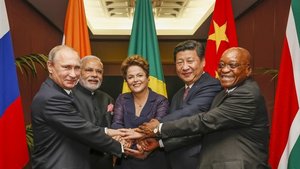
While keeping up with the ongoing geopolitical shenanigans between the US and Russia in Syria, I repeatedly note a recurring and glaring omission in every mainstream media report on the situation: a sensible reason why either country is so interested in Syria.
There are, of course, narratives, like that both countries are ‘fighting terrorism’, or that the US is supporting democracy in Syria by trying to overthrow the ‘brutal dictator’ Assad. But I assume that, at this stage, most people are highly skeptical of those explanations. After all, way back in 2003, in the run-up to the US invasion of Iraq, 15 million ordinary people saw right through the political narrative that the invasion was to protect Western populations from Saddam’s (non-existent) WMDs and marched on Europe’s streets chanting “no war for oil”.
Many people knew the real reason for the scramble for Iraq, but do they know the reason for the scramble for Syria? And what about Russia? Is Putin fighting a purely ideological war against terrorists and helping Russia’s long-term ally Assad to stay in power? Is that reason enough to launch modern Russia’s first-ever large-scale military deployment abroad?
In an October 2015 essay, I outlined the realpolitik behind the war in Syria at that time. It was then, and still is, all about natural resources, specifically oil and especially natural gas. Intricately linked to the development of these two resources, and to the future configuration of the world economy, is Eurasian integration and the ‘new Silk Road’, i.e. a network of land links between Asia and Europe (more about that below).
Energy Phase Change
Since its beginnings in the 1930s, the extraction and supply of Saudi and Middle Eastern oil was controlled by the US, which in turn allowed the US to manipulate and control much of the developed and developing world throughout the 20th century. As the dominant natural energy resource for most of the last 100 years, most of the world’s oil needs were provided by the Middle East, in particular Saudi Arabia, which is still the world’s largest exporter of oil today. Oil accounts for about 75% of Saudi government revenues, with the other 25% coming from “oil tourism”. So if any country in the world can be described as a petrol station masquerading as a country, it’s Saudi ‘head-chopper’ Arabia.
Due to its promotion of a culture of personal wealth at home and the need for massive military strength to steal the wealth of other nations, the US became a massive energy hog, and today consumes more gasoline than the next three biggest oil consumers combined – China, India and Japan. These 3 countries have a total population of 2.7 billion, 9 times the population of the USA. While it consumes vast amounts of oil, America is also the world’s largest oil producer, pumping out about 10 million barrels per day, slightly ahead of Saudi Arabia and Russia. Yet due to its massive appetite, it consumes all of that and must secure the same amount again from other nations.
A global energy phase change has been underway for the last 20 years. You’ve probably heard the term ‘peak oil’, where easily extractable oil reserves have peaked and can no longer keep up with growing global demand. The term ‘easily extractable’ is key here. There are still vast reserves of oil under our feet, but they are of a type and in locations that makes them much more expensive to bring to the market. The reality of ‘peak easy oil’ was arguably the main motivating force for the US invasion of Iraq and Afghanistan. Securing Iraqi oil fields for Western companies was seen as necessary to ensure the continuation of The American Way Of LifeTM, aka US global hegemony, through the control of energy resources. But the emergence of other resource-rich, non-aligned nations like Iran, Russia and China could not be impeded forever, and today the US’ ability to continue to manipulate the world through energy supply is under serious threat.
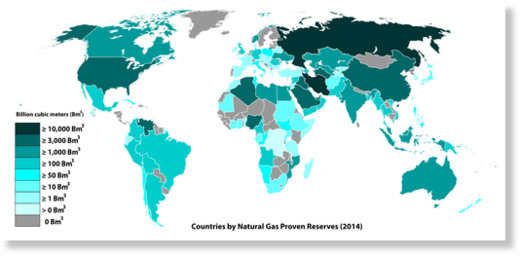
Natural gas is increasingly viewed as a viable replacement for oil. As a relatively (compared to oil) untapped resource, reserves of natural gas are plentiful. Natural gas is also cleaner than oil and, from the geopolitical perspective of Russia and China, it is set to play an instrumental role in Eurasian integration.
In addition to access to oil and gas, the invasion and (ongoing) occupation of Afghanistan was designed to place a strategic US military chess piece on the board, right between China and Iran, and between Russia (including the Central Asian ‘stans’) and Pakistan and India, and thus access to the Indian Ocean and shipping routes to Asia. Afghanistan is also right along the route of one of several planned ‘silk roads’ that would be used to transport energy resources and commodities across Eurasia and ‘knit’ the continent’s countries together in a de facto economic and political alliance.
So the heavy US military presence in both in Iraq and Afghanistan projected US power directly into two very strategic positions on the global ‘chess board’ with the intent of supplanting Russia/China-led and dominated Eurasian integration. US control of Afghanistan also had the bonus of potential access to $trillions in mineral resources, as Gen. David Petraeus made very clear, at 47 seconds, in this 2010 interview while he was Commander of US Forces in Afghanistan:
In short, ‘freedom and democracy’ my ass!
Seven Wars, One Goal
In 2007 Gen. Wesley Clark recounted a discussion he had at the Pentagon immediately after the 9/11 attacks:
I had been through the Pentagon right after 9/11. I went downstairs just to say hello to some of the people on the Joint Staff who used to work for me, and one of the generals called me in. He said, “Sir, you’ve got to come in and talk to me a second.” He says, “We’ve made the decision we’re going to war with Iraq.” This was on or about the 20th of September. I said, “We’re going to war with Iraq? Why?” He said, “I don’t know.” He said, “I guess they don’t know what else to do.” So I said, “Well, did they find some information connecting Saddam to al-Qaeda?” He said, “No, no.” He says, “There’s nothing new that way. They just made the decision to go to war with Iraq.” He said, “I guess it’s like we don’t know what to do about terrorists, but we’ve got a good military and we can take down governments.” And he said, “I guess if the only tool you have is a hammer, every problem has to look like a nail.”
So I came back to see him a few weeks later, and by that time we were bombing in Afghanistan. I said, “Are we still going to war with Iraq?” And he said, “Oh, it’s worse than that.” He reached over on his desk. He picked up a piece of paper. And he said, “I just got this down from upstairs” — meaning the Secretary of Defense’s office — “today.” And he said, “This is a memo that describes how we’re going to take out seven countries in five years, starting with Iraq, and then Syria, Lebanon, Libya, Somalia, Sudan and, finishing off, Iran.” I said, “Is it classified?” He said, “Yes, sir.” I said, “Well, don’t show it to me.” And I saw him a year or so ago, and I said, “You remember that?” He said, “Sir, I didn’t show you that memo! I didn’t show it to you!”
Clark’s account of this meeting appears to be genuine, given that the US has invaded and attempted to destroy three of the target countries already. But the apparent cluelessness about why these seven countries were being targeted is disingenuous. The obvious reason is US control of oil and gas in an attempt to maintain their control over Europe (the 2nd largest oil and gas market in the world), and push back Russia and China and the looming threat (even then) of Eurasian integration.
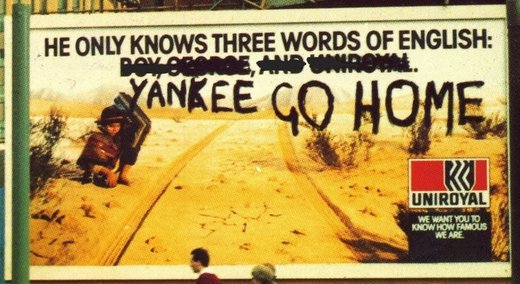
Libya was a no-brainer. Sitting right across the Mediterranean from Italy, its oil resources (the largest in Africa) could easily supply Europe for many years. But under Gaddafi? A leader who held entrenched anti-American views (and for good reason)? No way! If Libya was going to meet some of Europe’s (or China’s) energy needs, then it was going to have to be under US control. So Gaddafi and Libya were bombed by NATO, complete with the standard ‘brutal dictator’ allegations, and a puppet government was installed. Four years after NATO’s bombing campaign, however, things are still rather chaotic in Libya, with the US and allies still engaged in airstrikes against the jihadis they used to overthrow Gaddafi, which is par for the course with US ‘regime change’.
Somalia is yet to be directly targeted for regime change, which is understandable given that there has been no properly functioning government in the country for 20 years (thanks to the USA). So instead, as revealed by the NY Times a few days ago, the Obama administration has authorized the use of Special Operations troops, mercenaries and airstrikes in the country. The mission, which is ingeniously referred to in military circles as the “Somalia campaign”, has several hundred US troops in the country at any one time, supposedly ‘fighting terrorists’, which is the cover-all term used for decades by the USA to justify military interventions abroad in service to imperial expansion and control. Control over Somalia, which sits opposite Yemen, is seen, along with Yemen, as essential by Washington to control the Bab el-Mandeb strait and Gulf of Aden through which vast amounts of oil and other commodities transit, including large quantities of oil destined for China and Asia.
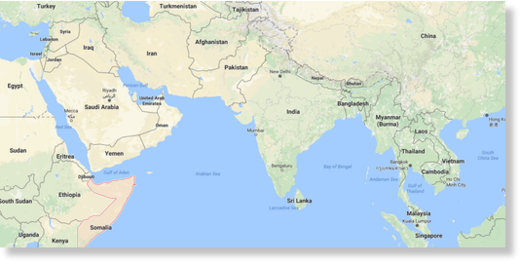
Yemen wasn’t on Clark’s list, but the US Air Force and Navy have been actively bombing that country for 2 years by way of Saudi Arabia, whose air force is really just the US Air Force by another name. The goal of the murderous campaign is to prevent the Iranian-backed Houthi rebels from taking power in the country and advancing Iranian control over the Arabian peninsula and its strategic waterways.
Sudan also hasn’t been subjected to the traditional regime change but instead embroiled in ‘civil war’ since 2003, with the Sudanese government fighting Washington-backed ‘rebels’ (sound familiar?) In 2011, the US and its allies, with the ever-grotesque Samantha Power manning the ‘humanitarian’ bullhorn, orchestrating the division of the country. The new country, South Sudan, holds the majority of the oil resources. Before the break-up, Sudan accounted for 8% of Chinese oil imports and China imported almost 80% of Sudanese total exports. The civil war and division of Sudan was therefore a blatant attempt by the US to deprive China of an important strategic partner that has received tens of $billions in Chinese investment in recent years.
Since 2001, the US has been leasing a military base in the tiny nation of Djibouti, which sits directly opposite Yemen and on the Bab el Mandeb strait and shares a small border with Somalia. Recently, US F-16s were deployed there for the eventuality of a “possible crisis in South Sudan”. Japan established a military base there in 2011 and just announced plans to expand it to “counter Chinese influence”. China has recently begun work on its first ever overseas naval base in the country. That’s one area to watch for sure.
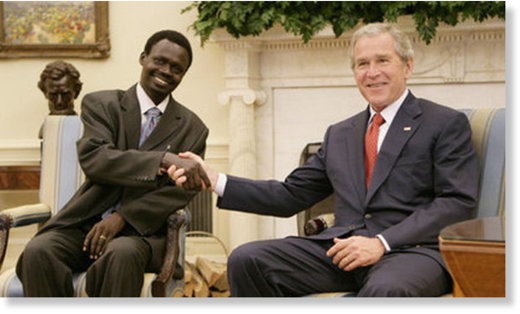
So that leaves us with Iraq, Syria, Lebanon and Iran. Iraq has already been ‘conquered’ and its oil fields handed over to US corporations. Iran was always going to be a problem due to its size and was therefore last on Clark’s list. In recent years, Washington decided against attacking the Persian nation directly and instead chose to neutralize it by holding on to Afghanistan and ‘taking care of’ Syria and Lebanon first, thereby impeding potential Iranian oil and gas exports to both China and Europe, and (they hoped) supplanting them with oil and gas from Saudi Arabia and its fellow head-choppers in the Gulf monarchies.
As noted in my previous essay, one of the plans for post-Assad Syria was to export Qatari gas to Europe via Syria and Turkey. The other plan was to exploit the gas and oil fields that lie off the Syrian coast. But the first order of business was to make sure Russia did not get there first. To do that, Assad’s Syria had to be annihilated.
US State Department cables obtained by Wikileaks make it clear that the US was working to undermine the Syrian government as early as 2006 by fomenting sectarian tensions, isolating Syria politically, and funding opposition groups within the country.
Roland Dumas, a former French foreign minister, told French national TV that in 2009 he was told by UK Foreign Office officials about secret preparations for “gunmen to invade Syria”.
A secret US cable dated 28th April 2009, sent to the CIA, National Security Council, the Secretary of State, the White House, Paris and London, shows that ‘regime change’ operations were already underway in Syria at that time:
“US policy may aim less at fostering ‘regime change’ and more toward encouraging ‘behaviour reform.’ If this assumption holds, then a reassessment of current US-sponsored programming that supports anti-SARG [Syrian Arab Republic Government] factions, both inside and outside Syria, may prove productive as well.”
Off-shore Mediterranean Reserves
CGGVeritas is one of the world’s largest seismic surveyors and is part-owned by the French government. In 2005 it was contracted by the Syrian Ministry of Petroleum and Mineral Sources to conduct seismic surveys for Syrian oil and gas. In 2011, a study appeared in GeoArabia, a petroleum industry journal published by a Bahrain-based consultancy, GulfPetroLink, which is sponsored by some of the world’s biggest oil companies, including Chevron, ExxonMobil, Saudi Aramco, Shell, Total, and BP. The study identified “three sedimentary basins located in offshore Syria” that held the prospect of “billion-barrel/multi-TCF [trillion cubic feet] drilling targets.”
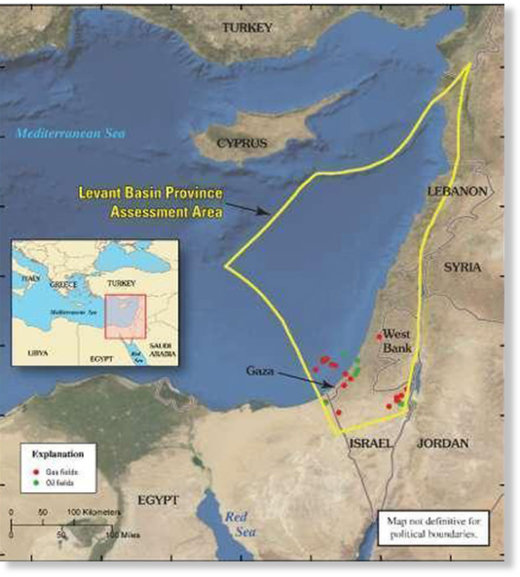
That same year, CGGVeritas had an exclusive contract with the Syrian government to provide technical support for the 2011 Syrian International Offshore Bid Round for firms to explore, develop and produce oil and gas from three offshore blocks in the Mediterranean Sea by the Syrian coast. The study continues:
“Exploration activity has increased in the Eastern Mediterranean in recent years following a series of major multi-TCF (trillion cubic feet) gas discoveries made in the offshore southern Levantine Basin,” wrote Steve Bowman, the author of the report. “Licensing rounds are scheduled to be announced during 2011 for areas in offshore Syria, Lebanon, and Cyprus, which are believed to share strong geological similarities with these discoveries.“
In 2012, the US Department of the Interior published a US Geological Survey Minerals Yearbook, which observed that the Syrian government-owned Syrian Petroleum Co.:
“… cooperated with several international oil companies, such as Chinese National Petroleum Co. (CNPC), Gulfsands Petroleum of the United Kingdom, Oil and Natural Gas Resources Corp. of India, Royal Dutch Shell plc. of the United Kingdom, and Total SA of France through subsidiary companies.”
That is to say, no American companies. Also note that the licensing rounds for development of Syrian gas fields were scheduled for 2011 but, coincidentally, the Syrian ‘revolution’ began that very same year.
In December 2014, the US Army War College’s Strategic Studies Institute produced a report titled: Regionalizing East Mediterranean Gas: Energy Security, Stability, And The U.S. Role. The report cites a 2010 US geological survey which pinpointed that the region – including Cyprus and Israel’s offshore zones, and the offshore (and some onshore) territories of Syria, Lebanon, and the Palestinian Territories – could hold, as many as 1.7 billion barrels of oil and up to 122 trillion cubic feet (tcf) of natural gas, leaving as much as two thirds of the region’s potential resource base still undiscovered.
“The East Mediterranean has been witnessing an unparalleled natural resource boom since the late-2000s, when Israel, followed by Cyprus, made its first significant offshore hydrocarbon discoveries in many years. These discoveries have since proven to be substantially larger than any other resources previously explored in the East Mediterranean Sea. At the time of this writing, they consist primarily of natural gas, although liquids are expected to be discovered offshore as well, including in the potentially hydrocarbon-rich waters of Lebanon and Syria.”
The report also notes that:
“Once the Syria conflict is resolved, prospects for Syrian offshore production are high […] potential oil and gas resources can be developed relatively smoothly once the political situation allows for any new exploration efforts in its offshore territories.”
Of course, the political situation in 2011 already allowed for the development of Syrian oil and gas, but then the Western-backed jihadis overran Syria as Washington screamed for Assad’s removal.
Referring to Israel’s large potential share of the off-shore gas fields, the report states:
“Israel’s security and the stability of the Levant […] lies at the heart of US foreign policy in the region. […] US military support for its allies in the case of an eruption of natural resource conflict in the East Mediterranean may prove essential in managing possible future conflict; this involves cooperation in the evaluation of different risks associated with the region’s various export options.
Any absence of visible US diplomatic and technical assistance could lead to a gradual change of alliances among some parts of the region toward emerging powers and potential new peace-brokers such as Russia – which already entertains a strong interest in East Mediterranean gas developments – and notably China.”
So in answer to the question of real Russian and US intentions in Syria: Russia is defending its right to not have its vital economic ties to Europe and the Middle East destroyed by the USA; and the USA is, well, asserting its exceptional right to destroy the vital economic interests of any nation that would challenge US hegemony (by asserting its natural rights). But the big picture here extends far beyond Syria, both geographically and in its implications for our collective future.
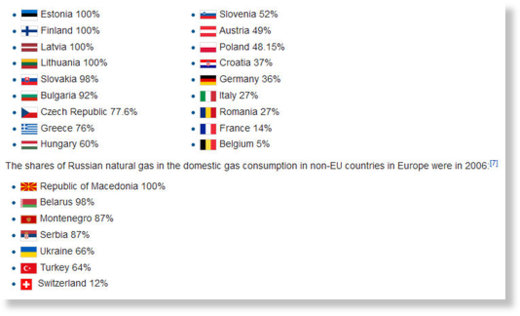
China and Eurasian Breakout
As the US attempts to force Europe to ‘diversify’ its natural gas supply away from Russia and control oil and gas supplies in the Middle East that China desperately needs to feed its growing economy, Russia, China and Iran are all actively diversifying and expanding their own traditional economic links.
As noted, China is investing heavily in African oil and railways, roads and power infrastructure to transport the oil to the coast. Last month Chinese firms completed the 656km Ethiopia-Djibouti railroad project. The brand new electric railway links Ethiopia’s capital Addis Ababa to the Djibouti coast. China is also building highways and a deep sea port in Pakistan to link China directly with the Arabian Sea, and work on another railway and sea port in Bangladesh is underway. All of which is in line with China’s ‘String of Pearls’ plan for the Indian Ocean region, preparation for which includes the first ever Chinese-Indian joint military exercises that took place in Jammu and Kashmir a few days ago. When you factor in China’s ‘nine dash line’ claim to the South China sea, what we are seeing is a veritable Chinese breakout from the economic and political ‘jail’ that Washington has attempted to impose on Asia’s largest economic and military power.
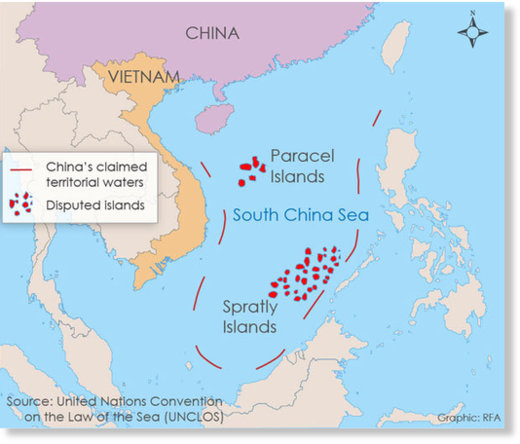
Apart from its game-changing moves in Syria, Russia recently re-established the Turkish Stream gas pipeline deal with Turkey that will deliver Russian gas to Europe; completed the $900 million sale of S-300 missile systems to Iran; and inked a host of deals with India at the recent BRICS summit in Goa, including a multi $billion sale of the S-400 missile system and agreements to build military helicopters, naval frigates and railway links between the two countries. In addition, Russian energy giant Rosneft just bought India’s 2nd-largest oil refinery, which includes a franchise of 2,700 gas stations.
These are all smart moves given that India, a nation of 1.3 billion people, imports 80% of its oil, mostly from the Middle East. But that looks set to change. In a sign that Russia is serious about its desire for a multi-polar world, Rosneft said that they would supply their new Indian acquisition with Venezuelan oil. To top it all off, Russia and India have begun discussions on the construction of a $25 billion Russian natural gas pipeline from Siberia to India.
Iran appears to be following the Russian and Chinese example with a planned sea port in Chabahar (in partnership with India) on Iran’s Arabian sea coast that would not only facilitate shipping of Iran’s vast energy resources to India and Asia, but provide a corridor to the sea for Afghanistan to exploit the $trillions in minerals coveted (and currently illegally claimed) by the USA.
All of this can be summed up by the phrase ‘new silk road’, which is fairly well represented by this image:
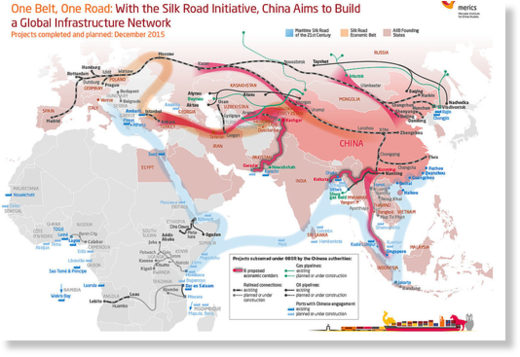
Note that the above image is the Chinese vision and does not depict the Russian and Iranian economic corridors which are, nevertheless, fully compatible with the Chinese model. The Chinese model, or One Belt One Road: The Silk Road (OBOR), is described as being an initiative that:
by far exceeds the development of linear connections between Europe and Asia. In fact, Beijing strives to establish a comprehensive Eurasian infrastructure network. Trans-regional corridors are to link the land and sea routes. As the primary investor and architect of the Eurasian infrastructure networks, Beijing is creating new China-centred pipeline, railway and transport networks. In addition to this the Chinese leadership is focused on the expansion of deep-sea ports, particularly those in the Indian Ocean.
With the OBOR the Chinese leadership is primarily pursuing three main goals:
- Economic diversification
- political stability and the
- development of a multipolar global order
Politically speaking, the Chinese leadership hopes that the OBOR initiative stabilises Beijing’s western Provinces, as well as the neighboring trouble spots, like Pakistan or Afghanistan.
The overarching goal is to be an active part in the establishment of a multipolar world-order. China seeks to play a constructive role in the reform of the international system. The OBOR-Initiative is intended to be the foundation of a new type of international relations. The Chinese leadership speaks of the establishment of a “community of common destiny”. Core elements are more connectivity in Eurasia, “win-win-cooperation”, “mutual progress and prosperity” as well as upholding the UN principle of non-interference in the internal affairs of other states.
The Chinese leadership speaks of an inclusive process, which means that all involved parties are invited to shape and promote the “Silk Road Economic Belt” and the “Maritime Silk Road of the 21 Century” in line with their own economic interests.
First steps of institutionalisation are already emerging. The recently established AIIB and the Silk Road Fund serve to finance the projects. In May, China and Russia agreed to link the Silk Road Initiative with the Russian Far East Development Programme for Siberia. In addition to this, Moscow and Beijing agreed to link the Eurasian Economic Union with OBOR. Moreover, in June Hungary and China signed a Memorandum of Understanding to jointly promote the Silk Road Initiative.
To simplify things further and perhaps sum up, in one image, everything I have written here, the image below, more or less, nails it:
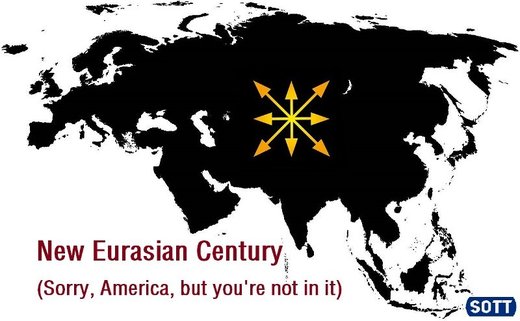
Now can you see why the Anglo-American empire is so concerned?
Not to put too fine a point on it, but if a hoard of aliens in massive motherships descended on earth with the intention of enslaving humanity, and if humanity’s only hope of freedom lay in our world’s nation-states putting aside their differences and uniting in face of the existential ET threat, you can bet your butt the US would be the only one dragging its heels and talking about siding with the “moderate aliens” in the hope of screwing over Russia and China.
What we are seeing play out on the world stage is a clash of civilizations, a clash between two fundamentally different approaches to life and international relations. On the one hand, we have the multipolar vision of economic and political stability, where war is not only unwanted but also counterproductive, where nations respect each others’ sovereignty and make deals that are mutually beneficial. On the other hand, we have the unipolar world where one nation has the license to control, exploit and destroy other nations who do not hand over their resources to the global hegemon.
You might want to ask yourself: in which world would I rather live?
"..where one nation has the license to control, exploit and destroy other nations.."
Great summation, thank you. The most disturbing information for me is the inefficiency of the US in its use of fossil fuels. If there ever were a peaceful and equatable solution to utilizing the world's energy resources, it has to come from the US learning to prosper within it means, a much less costly endeavor for the US as well. Its military is also the largest user of fuels. It looks as though the US will learn this, one way or the other.
As I spend my last few days here in Central Asia – Astana, Kazakhstan, I see the giant strides forward this country and by extension all the others in the region are making.
The USA has met its match in the most solid resistance and counter BS in Russia – and if they had only studied the true history they would have known they were on a hiding to nowhere.
Traveling along the new Silk road super highway from Turkestan to Shymkent a couple of days ago I was overjoyed to know that the Eurasian Century is well under way despite the mosquito annoyances of the US bully and its puppets.
I feel so strongly, in spite of the last gasp efforts to destroy all good things, that we shall blossom into a new era of cooperation built on mutual respect, a recognition peace and tolerance are the main pillars of human evolution and that it will become clearer over the next 30 years, of which I would love to still participating in the game.
As always Joe a pleasurable and satisfying long read – damn if my attention span will ever diminish!!!
Thanks Jon!
Here's what he said–
<< “This is a memo that describes how we’re going to take out seven countries in five years, starting with Iraq, and then Syria, Lebanon, Libya, Somalia, Sudan and, finishing off, Iran.” I said, “Is it classified?” He said, “Yes, sir.” >>
My question is–
Where and whom can issue orders like this.? Where and Who is on high that this comes from?
I have no doubt that that is the case but WHO/ WHOM?
Here's what he said–<<He said, “Sir, you’ve got to come in and talk to me a second.” He says, “We’ve made the decision we’re going to war with Iraq.” This was on or about the 20th of September. I said, “We’re going to war with Iraq? Why?” He said, “I don’t know.” He said, “I guess they don’t know what else to do.” >>
Who makes these descisions? Where and who sends this stuff down the pipeline to take out seven countries?Who are they?
I see that that is what's going on and your post nails it, but who are these ones that are in command?